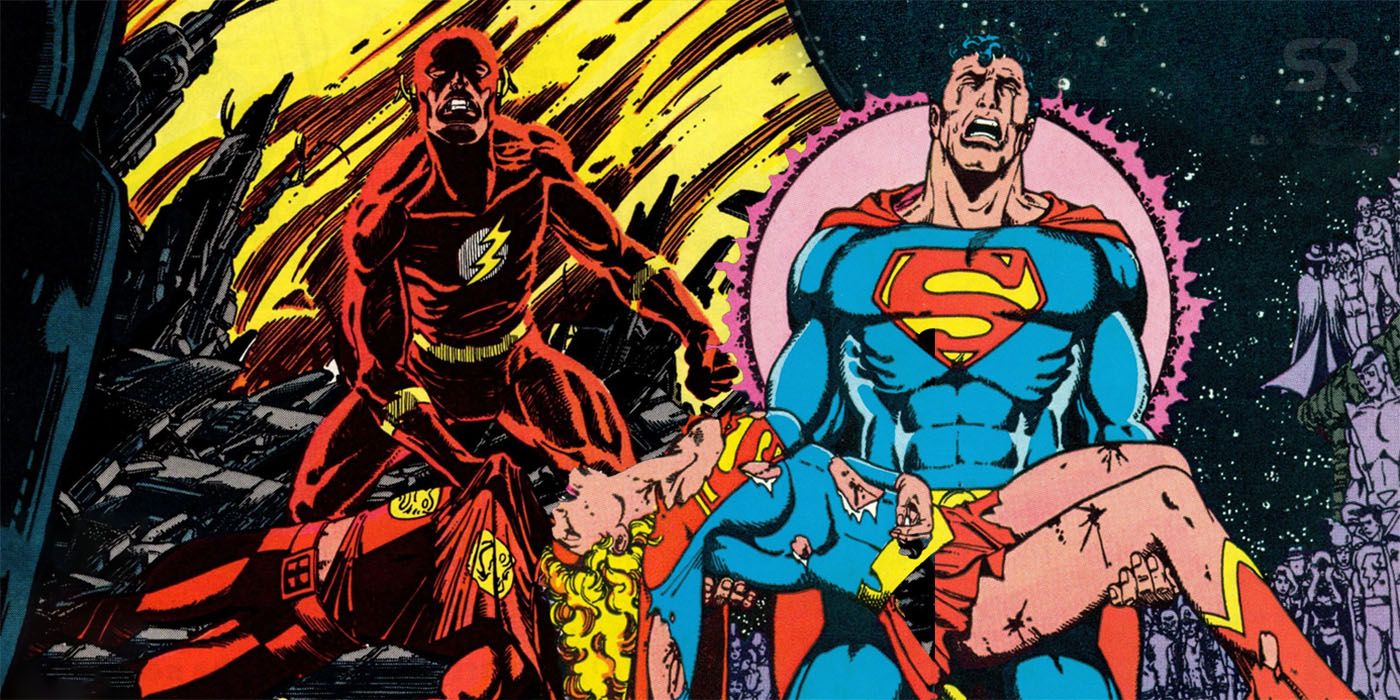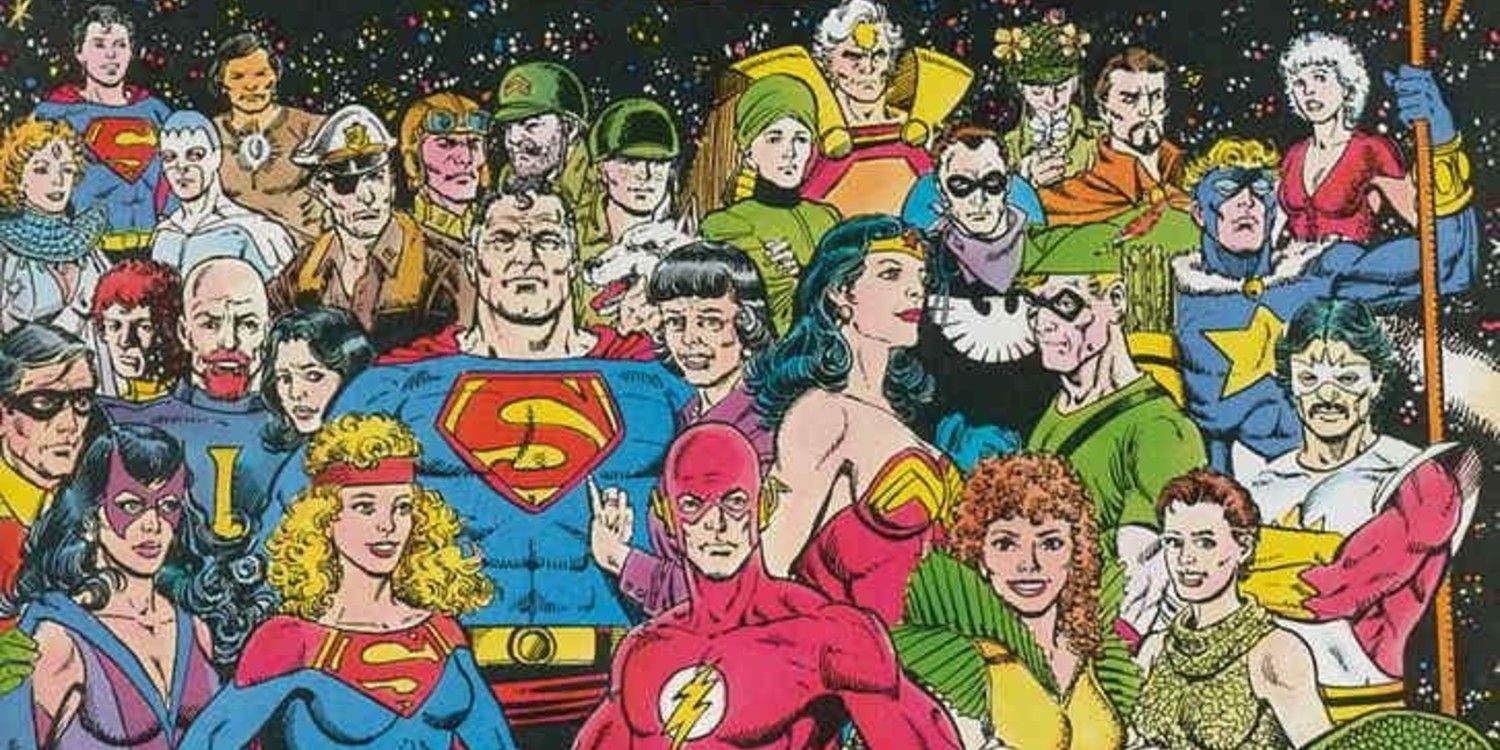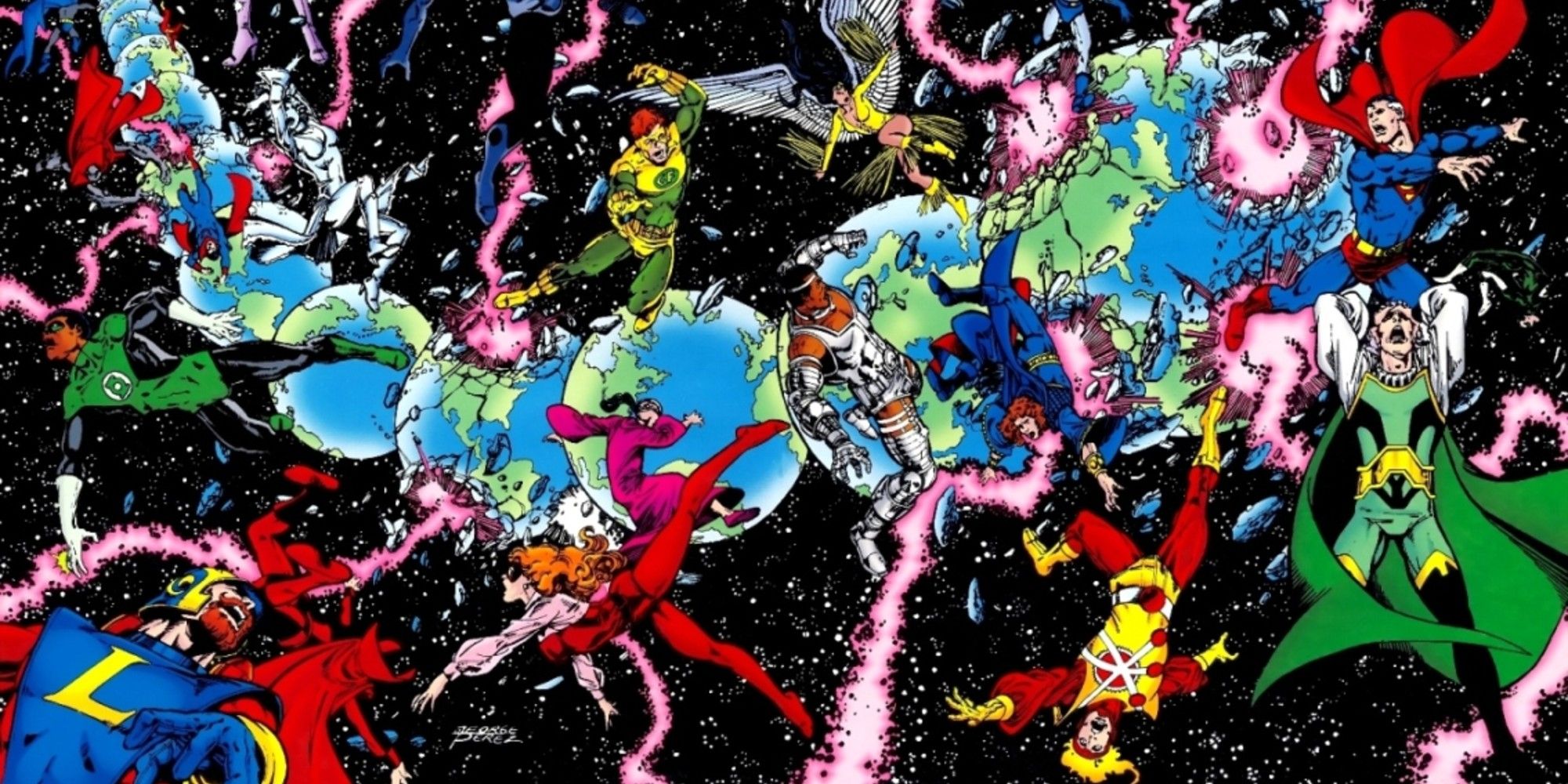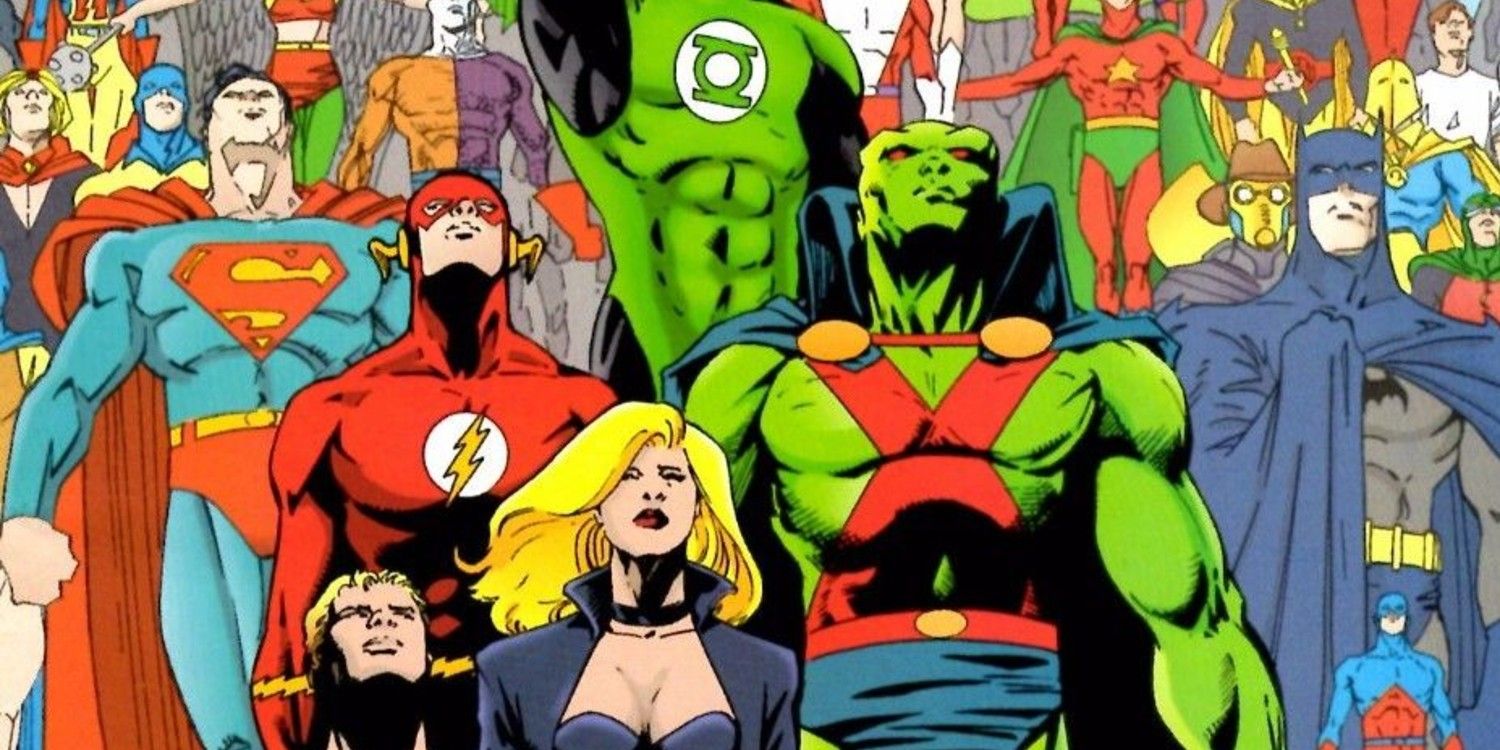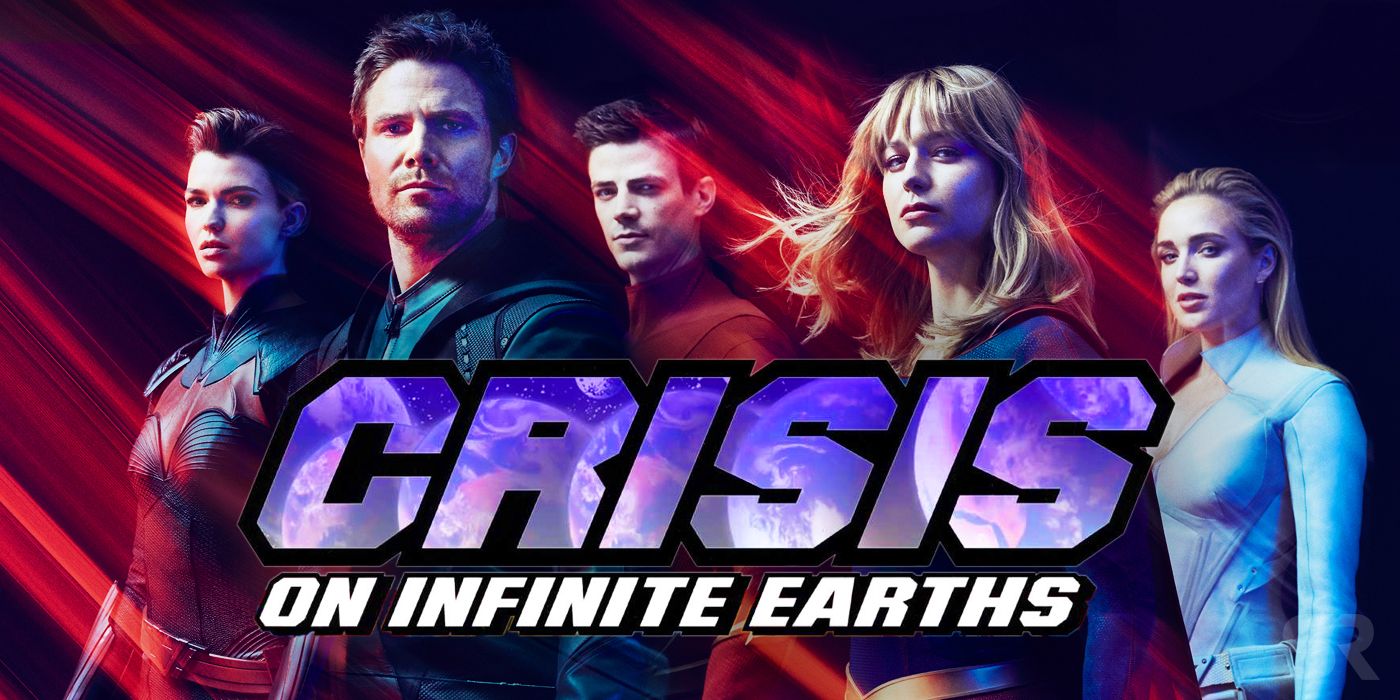The 2019 Arrowverse crossover Crisis On Infinite Earths stands poised to forever alter its reality, and challenge the rules regarding what can and cannot be done with superheroes within the context of several television series. Fans who are only familiar with the TV shows may not know the story of the original Crisis On Infinite Earths comic books, which inspired the event and had a major effect upon DC Comics and the comic book industry at large.
To call Crisis on Infinite Earths revolutionary would be an understatement. While some historians argue that Marvel's Secret Wars was the first major comic book crossover event, it lacked the scope and scale of Crisis on Infinite Earths, focusing on only a handful of characters and originally being conceived as a tie-in comic for a line of action figures. By contrast, Crisis On Infinite Earths was intended to showcase every character DC Comics' had ever created, and was meticulously planned over the better part of a decade.
While it remains to be seen how closely the Arrowverse Crisis will follow the story of the original comic book storyline, it has set itself up in a similar vein by introducing the mysterious Monitor. It has also established similarly high stakes, with Oliver Queen destined to die as part of the coming battle, after he bargained with the Monitor to save the lives of his friends. The event is also borrowing the tagline from the advertisements that promoted the original comics: "Worlds will live. Worlds will die. And the universe will never be the same!"
What Crisis On Infinite Earths Was All About
Crisis On Infinite Earths came about for two distinct reasons. The first was a desire to streamline and simplify the DC Comics' line of books so that it could be made more accessible to new readers. The second was to showcase everything that made DC Comics unique, as a way of celebrating the company's 50th anniversary.
The planning for Crisis began in 1981, after writer/editor Marv Wolfman received a letter from a reader asking why a character didn't recognize Green Lantern in the most recent issue, when the two had met before in a different comic published 3 years earlier. The letter exemplified the reasons why Wolfman felt DC Comics had been slowly losing their audience for years; it was too hard for new readers to become attached to a series, due to the sheer size of the DC Comics multiverse and the different versions of popular characters that existed. For instance, one Superman book might depict Clark Kent as he was in the Christopher Reeve movies, while another showed him as an older man with graying temples, happily married to Lois Lane.
Wolfman pitched a revolutionary story that would allow the whole of DC Comics' multiverse to be condensed into a single reality. After DC Comics' top brass approved the basic idea, Wolfman began to lay the groundwork in the comics that he wrote. At the same time, DC Comics hired a professional researcher to go through every book DC Comics had ever published and catalog all of their characters, so that they could all appear in Wolfman's proposed story.
This undertaking took two years, by which point it was decided that the story should be delayed until 1985, so that its release would coincide with the 50th anniversary of DC Comics' foundation. During that time, Wolfman's frequent artistic collaborator and co-creator of the New Teen Titans, George Perez, heard about the project and requested the assignment of drawing the 12-issue maxi-series be given to him. With Perez and executive editor Dick Giordano assisting him on the plotting duties, Wolfman began to shape the story of Crisis On Infinite Earths.
What Happens In Crisis On Infinite Earths
Wolfman lay the groundwork for Crisis On Infinite Earths with the introduction of the Monitor - an alien who appeared throughout the DC Comics' multiverse. At first the Monitor seemed to be an intergalactic arms-dealer, supplying supervillains with advanced alien weaponry. Yet the Monitor was also depicted engaging in noble acts, such as saving a young girl called Lyla Michaels from being lost at sea. Between his ill-defined powers and the seeming randomness of his actions, the Monitor was an enigma for many years.
The opening chapters of Crisis Of Infinite Earths explained the Monitor's actions, if not his background or the limits of his powers. A physical manifestation of the positive matter multiverse, the Monitor had come to learn of the existence of a being of pure evil who was his equal and opposite - an Anti-Monitor who ruled over the anti-matter universe. Somehow, the Anti-Monitor had discovered that the destruction of positive matter universes expanded his realm and increased his power, leading him to start destroying the multiverse in a bid to become all-powerful.
Steadily weakened by the destruction of the realities that empowered him, the Monitor hit upon a bold plan. He would build an army of heroes, forged from the mightiest beings across the multiverse and set them upon the Anti-Monitor. To that end, he began empowering the evildoers of the multiverse as a means of testing the heroes. Beyond building his army, the Monitor also empowered two champions to act as his agents.
The Monitor transformed Lyla Michaels, whom he had come to raise as his own daughter, into the heroine Harbinger, giving her the power to spread her consciousness throughout the multiverse in a series of clone bodies. It was Harbinger who gathered those champions the Monitor had found worthy of joining his epic crusade. The Monitor also gave immortality and invulnerability to a scientist he dubbed Pariah, who had accidentally developed a connection to the Anti-Monitor after his experiments opened a portal to the anti-matter universe, leading to the destruction of his Earth. The Monitor used Pariah to track the Anti-Monitor's movements, as Paraiah's connection forcibly teleported him from reality to reality, arriving in a universe just before the Anti-Monitor and his forces began destroying it.
The Aftermath Of Crisis On Infinite Earths
In the end, the Anti-Monitor was defeated, but only thanks to the sacrifice of many heroes. The most notable among these were Barry Allen, The Flash of Earth-1, and Kara Zor-El, the Supergirl of Earth-1. In the end, only five Earths survived the Crisis: Earth 1 (home of the Justice League), Earth-2 (home of the Justice Society), Earth-S (home of Shazam and all the heroes once owned by Fawcett Comics), Earth-4 (home of Blue Beetle and all the heroes once owned by Charlton Comics) and Earth-X (home of Plastic Man and all the heroes once owned by Quality Comics).
These five Earths merged into a single Earth with a single shared history, dubbed New Earth. The heroes of Earth-2 and Earth-X, who had existed during World War II in their original timelines, were now the first generation of superheroes on New Earth. The heroes of Earth-1, Earth-4 and Earth-S constituted the new generation of heroes, operating in modern times.
Most of DC Comics' major titles were rebooted, with new origin stories being commissioned to explain the heroes' origins on New Earth. The Superman mythos were changed so that Kal-El was the sole survivor of Krypton, with no Supergirl, Krypto the Super Dog or Beppo the Super Monkey to assist him. Batman's background remained largely the same, but the editors of the Batman titles pushed the idea that Batman no longer operated in the open and was considered an urban legend by most of the people of Gotham City. Black Canary became a legacy character, with Dinah Drake having served in the Justice Society and her teammates acting as an army of uncles to her daughter, Dinah Lance, who went on to become a founding member of the Justice League as the second Black Canary.
How Crisis On Infinite Earths Will Be Different On The Arrowverse
The creators behind the Arrowverse have been building towards producing a live-action version of Crisis on Infinite Earths for years. The first hints were dropped in the pilot episode of The Flash, with a newspaper from the future describing how The Flash disappeared during a crisis where the skies turned red and shadowy demons stalked the streets of Central City. These events matched the Crisis On Infinite Earths comics, where the skies turned red during the event and the Anti-Monitor's followers included shadowy demons.
While the Arrowverse has grown to encompass dozens of worlds, it has not become as unmanageable as the DC Comics' multiverse of 1981. With the exceptions of Supergirl (which is set on Earth-38) and Black Lightning (which was only recently established as being a part of the Arrowverse), all of the Arrowverse shows have been set on Earth-1. As such, there has been no indication that there will be a single, solitary universe once Crisis on Infinite Earths comes to a close, though it has been announced that there will be one new Arrowverse show starting up in Fall 2020.
Given that, Crisis On Infinite Earths could be just the thing to shake-up the Arrowverse and streamline the whole line-up. It would be far easier for Supergirl and Batwoman to have team-ups if they were living on the same Earth. It would also simplify things for the benefit of new viewers if the new universe were to eliminate some of the excess characters and leave Caity Lotz as the only Black Canary. With infinite Earths in play, literally anything is possible.

